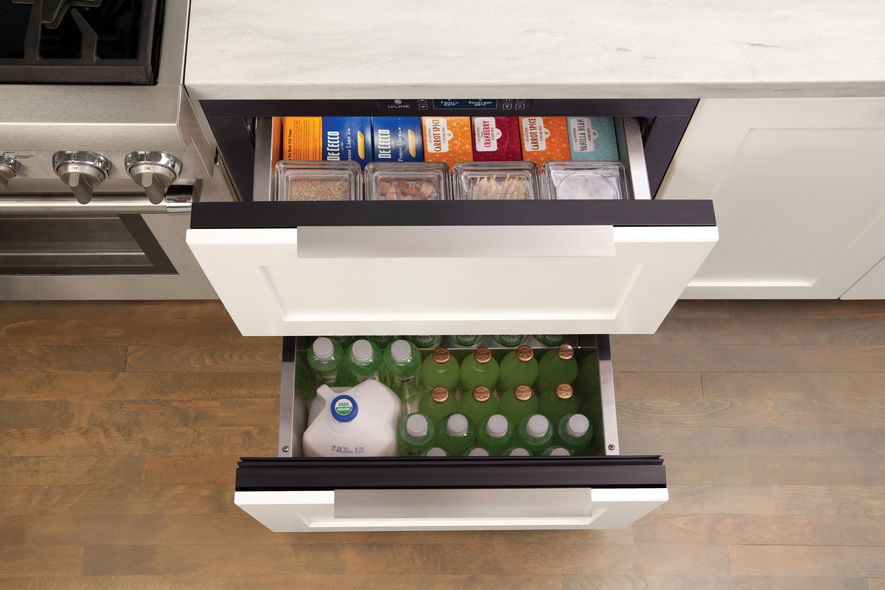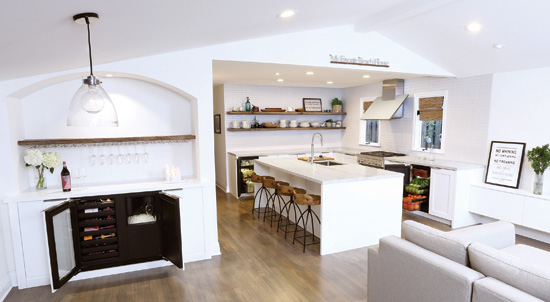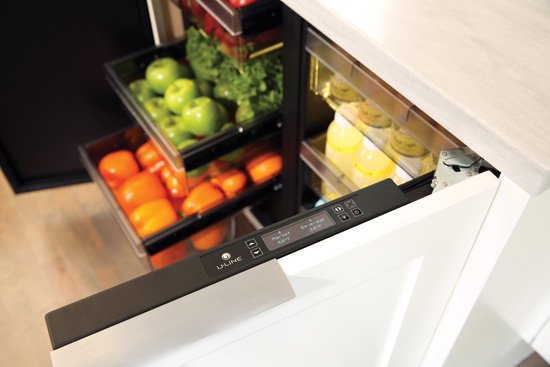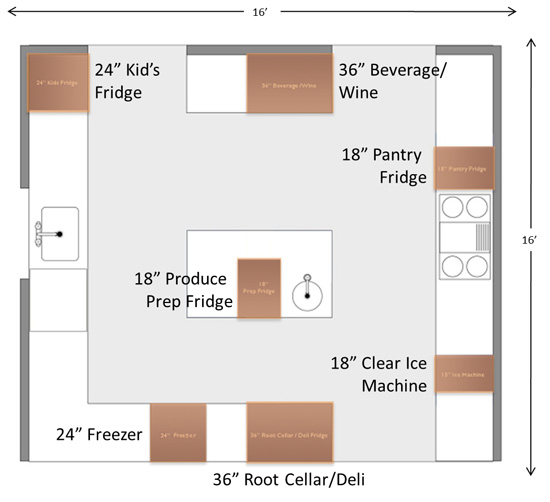The Shift to Modular Refrigeration

Photo courtesy of ULine
Modular freezer units maintain frozen goods
WITHOUT FREEZER BURN
Modular refrigeration units are a breakthrough in the sense that they obviate the need for the traditional kitchen triangle, enabling the kitchen to be more aligned with contemporary trends and personal preferences. Because modular refrigeration products can be placed anywhere in the kitchen, they suit storage and design needs, while providing greater convenience for the homeowner. In fact, refrigeration units can be installed in areas that would have previously been difficult to access, such as islands and pantries.

Photo courtesy of ULine
A strategically placed beverage center chills drinks to their proper temperature, while cutting down on interference with traffic flow in the kitchen.
A kitchen is naturally divided into zones—cooking, prepping, cleanup, daily use, baking, freezer, and entertainment—each of which supports different behaviors, users, and situations. Modular refrigeration is intended to complement this design approach and is focused on the way the kitchen is used for entertaining, daily living, and meal prep, as well as on maximizing storage efficiency for varying lifestyles. While not a substitute for the full-size refrigerator and freezer, modular units are a specialized point-of-use refrigeration option that is meant to accommodate today’s evolving kitchen design trends and the changing nature of the domestic landscape and the way in which the kitchen space is utilized.

Photo courtesy of ULine
Temperature-controlled storage for delicate items, adjustable interior configurations, and hygienic food storage features are some of the characteristics that help make modular units popular among home chefs.
There are several situations in which modular refrigeration can enhance layout and workflow. Units can be placed to preserve food and beverages near corresponding work areas. Modular refrigeration provides a more accessible area devoted to snacks and juices for children, which can take up significant space in the traditional fridge; or, modular units can be used exclusively to produce and preserve ice or wine for the beverage center, for example. A fridge placed near the edge of the kitchen will mean kids can grab a snack or adults a bottle of wine without interrupting meal preparation or traffic flow in the kitchen. Users who entertain frequently might opt for an “overflow fridge” to be utilized for parties or during the holidays. The result is still ergonomic, as the arrangement of units reflects the use and flow of the evolved kitchen space. The following schematic (see the online version of this course) shows a plan for distributing the modular refrigeration units to support the workflow.

Image courtesy of ULine
This example provides an approach to organizing modular units according to appropriate zone.









